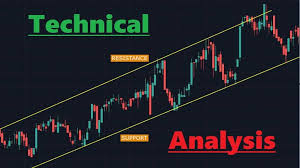At the beginning of the week, the USD/JPY pair rebounded, starting trading with adjustments to the previous week’s decline. The US employment report from last week showed an increase of 209,000 in non-farm payrolls, which fell below expectations and intensified selling pressure on the US dollar. However, the content of the report is important to consider. The unemployment rate decreased from the previous 3.7% to 3.6%, and average hourly earnings maintained a high level with a month-on-month increase of 0.4% and a year-on-year increase of 4.4%. Some voices even argued that an increase of 200,000 in employment is satisfactory and meets the average level so far.
In the Tokyo market, the USD/JPY pair temporarily rose from around 142 to around 143. The EUR/USD pair softened from the upper 1.09 range to the mid-1.09 range, while the GBP/USD pair softened from the lower 1.28 range to around 1.28. Overall, the US dollar buying pressure prevailed. However, due to the sluggish performance of the stock market, the upside of the USD/JPY pair and other yen crosses became heavy, and the yen’s strength became noticeable.
This week, on the 12th, the June US Consumer Price Index will be released. Market expectations are spreading that the growth will further slow down. The year-on-year rate is expected to decrease from 4.0% to 3.1%, and the core year-on-year rate is expected to decrease from 5.3% to 5.0%. However, the market has already factored in the peaking of inflation, and the focus seems to have shifted to how long it will take to return to the 2% target. Fed Chairman Powell has explicitly denied the possibility of rate cuts within this year. The market’s reaction to the slowdown in inflation does not seem as strong as before.
Amid concerns about persistent core inflation in the UK and the Eurozone, there is a tendency for relative selling pressure on the US dollar. Additionally, it is important to pay attention to market speculation regarding the Bank of Japan’s Yield Curve Control (YCC) revision. While the BOJ maintains a clear stance of continuing with massive easing, foreign investors seem eager to find signs of easing adjustments. Last week, there was a notable moment when BOJ Deputy Governor Uchida stated that he wants to “balance and make judgments while considering financial intermediation and market functions” regarding the revision of YCC, which attracted attention.
In the future market, it will be important to assess the impact on the yen exchange rate from the weakness in the stock market and to observe whether the selling pressure on the US dollar will resurface.
The strength of JPY and CHF has become more prominent. However, recently, Mondays have shown a tendency to trade within a range, so it is advised to be cautious and observe the situation.


